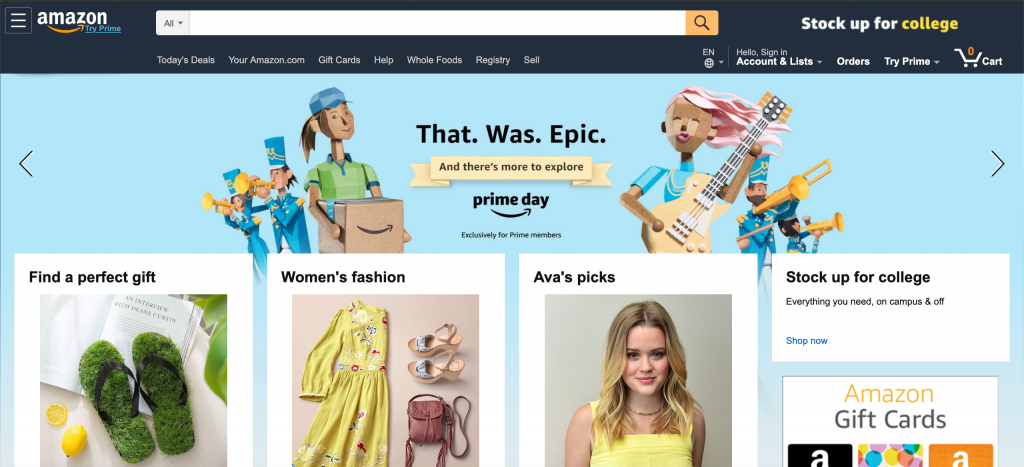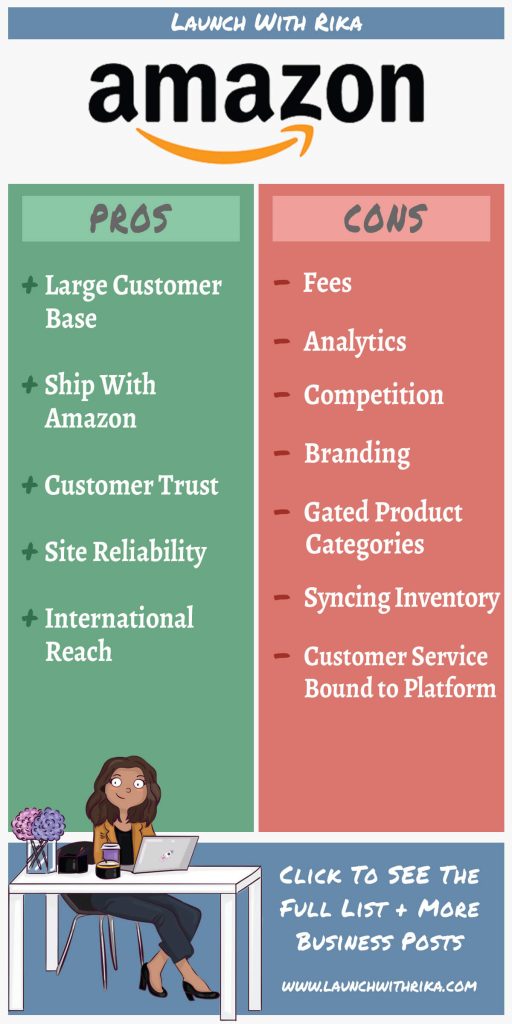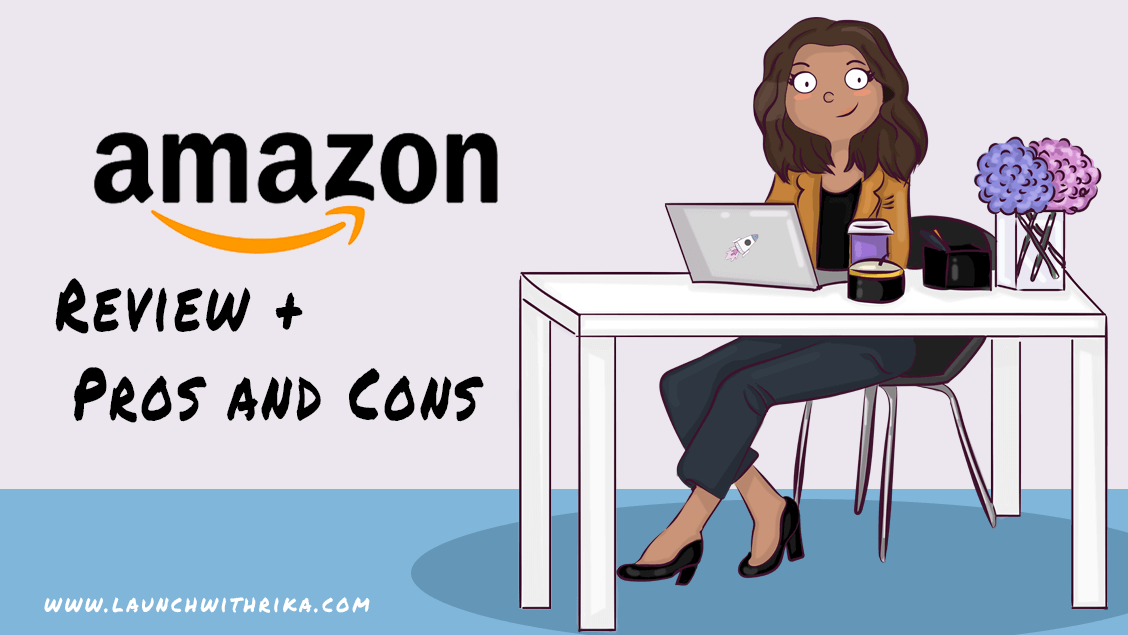Amazon probably doesn’t need a big introduction. So far, I didn’t meet many people that haven’t ordered from Amazon before. Amazon is a gigantic marketplace with an unbelievably big customer base. In 2017, Amazon was responsible for 44% of all U.S. online sales. Amazon has over 100 million Prime members and sells over 500 million products across the world.

By now, Amazon offers a lot of its own products. This is not only true for electronic devices such as Alexa. You can find Amazon-branded items under its “Amazon Basics” brand in many product categories like home and kitchen, office supplies or travel accessories.
This, however, doesn’t mean that there is no room for new sellers. If you want to sell on Amazon, you’ll be using a platform that is called Seller Central. In this article, I’ll share my Amazon review and outline my personal pros and cons of selling on Amazon.
Amazon Pros and Cons Infographic

Amazon Pros and Cons
Amazon Pros
Customer Base
Amazon’s gigantic customer base is probably this marketplace’s biggest pro. According to CNBC, Amazon took almost 50% of the e-commerce market in 2018. This means that there are a lot of potential customers for your products on Amazon. When buyers want to make a purchase online, chances are they’re checking Amazon.
Ship With Amazon
Thanks to Amazon’s fast shipping options, many shoppers expect their online purchases to arrive within 2 days. If you make a lot of sales, you can use fulfillment by Amazon and get your products to your customers faster with Prime shipping. This doesn’t only remove the headache of fulfilling orders yourself but faster shipping might also increase sales. Just make sure your margins are high enough to account for the fees of Prime shipping.
Customer Trust
Since most people have ordered from Amazon before, users know and trust the platform and the company. Many shoppers already made successful transactions in the past and order from Amazon confidently. Customers can also leave reviews for their orders, which helps to separate the good from the bad sellers.
Site Reliability
When you manage your own website, you need to make sure that everything is running correctly. Amazon is basically never down which enables you to sell on this marketplace 24/7.
International Reach
If you want to sell to other countries, Amazon can help you reach customers worldwide. Amazon is known across the world and trusted by many international customers.
Amazon Cons
Fees
Amazon’s fees depend on the product you want to sell, the product’s price, as well as the subscription you choose. You don’t have to have to pay a monthly subscription fee if you’re planning to sell less than 40 items/month. You’ll still have to pay a $0.99 selling fee per item sold. If you want to sell more, it’s $39.99/month and no selling fee. Amazon takes a 6%-20% referral fee for each item sold. The referral fee depends on the category and selling price. Most categories are at 15%. There’s also a $1.80 closing fee for products sold in the Media category.
Analytics
From my experience, Amazon analytic’s tools aren’t that great. It’s not very easy and straightforward to optimize your listings or to get more insights. You’ll have to work through spreadsheets to find the information you need to make informed decisions.
Branding
Creating a brand on third-party marketplaces can be tricky. Shoppers often search for specific products, or for brands they already know. Only a few customers browse through Amazon to discover new brands. You’re also not allowed to create an email list of your Amazon customers. E-mail marketing isn’t allowed so building a relationship with your customers is difficult.
Competition
A lot of Amazon’s categories are flooded with sellers and products. Since customers can compare prices on Amazon, prices might get pushed down. Make sure your product has enough margins so you can compete. Some sellers’ products were even copied by Amazon. The company then favored its own products in the search results. Other Amazon sellers an also hijack your listing and sell the same item for a lower price.
Gated Product Categories
In order to tackle the flood of listings, Amazon created more barriers to entry. You’ll need to receive pre-approval for some categories, like fine-art. For other categories, like handbags and shoes, you need to be a professional seller. Creating a listing on Amazon also requires a bit more time than on other platforms. You need to a lot of listing details and each product requires a unique UPC or ASIN.
Syncing Inventory
When you decide to sell through several sales channels, you need to keep track of your inventory on each one of them. Making sure that the inventory is always up to date can take a lot of time. I recommend using inventory tracking software.
Customer Service Bound to Platform
You have to respond to messages from your Amazon customers on Amazon’s platform. It makes it a bit tiresome to keep track of all the messages and to make sure to respond within Amazon’s required 24 hours.
Conclusion
Even though Amazon has more cons than pros on this list, the number of shoppers on Amazon outweigh the disadvantages. If your product is unique and has healthy margins, it’s worth trying to sell on Amazon. Amazon is a great extension to your website.
Some other potential sales channels are eBay and Etsy. To see if those could be a good fit, I created an eBay review and an Etsy review.







